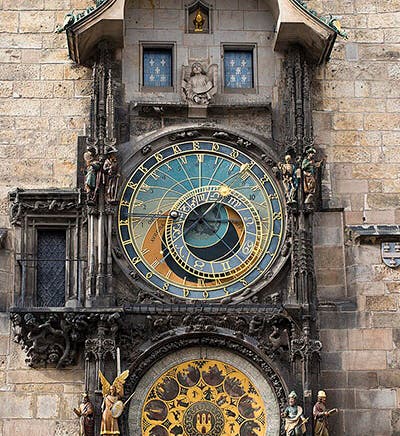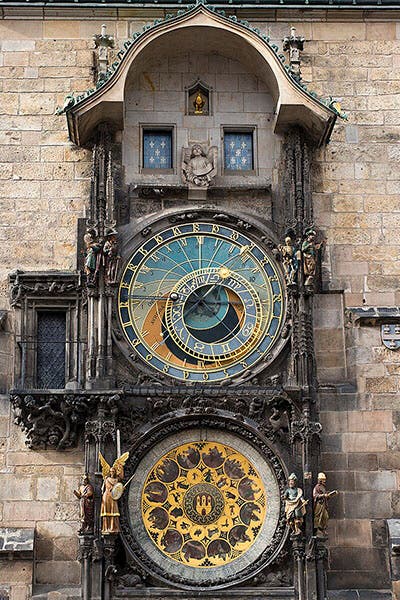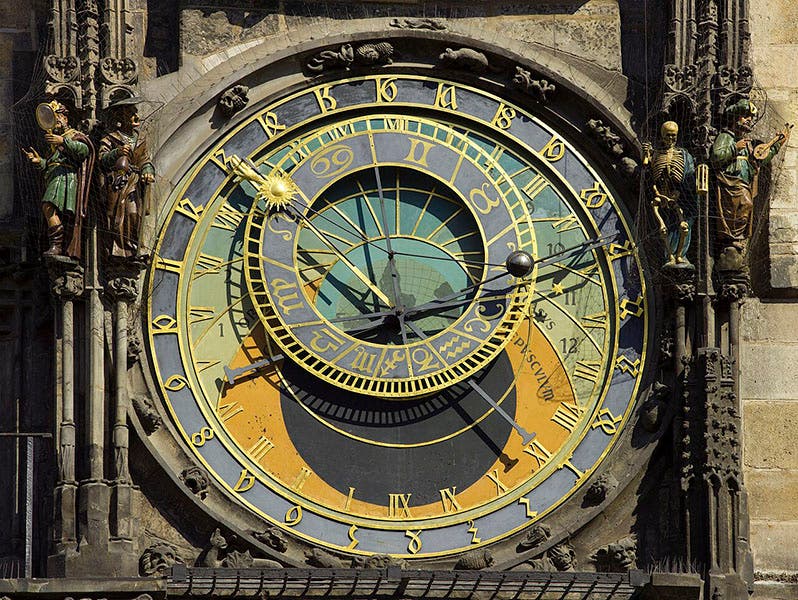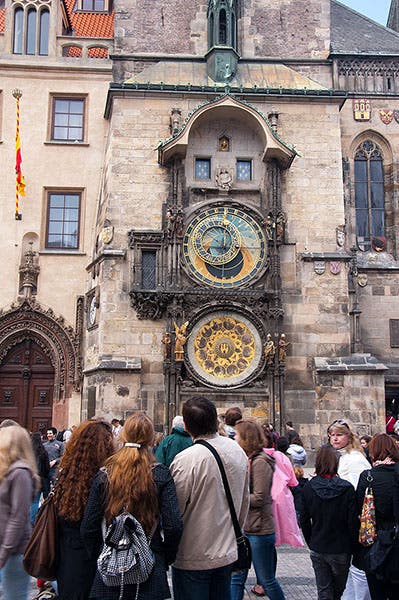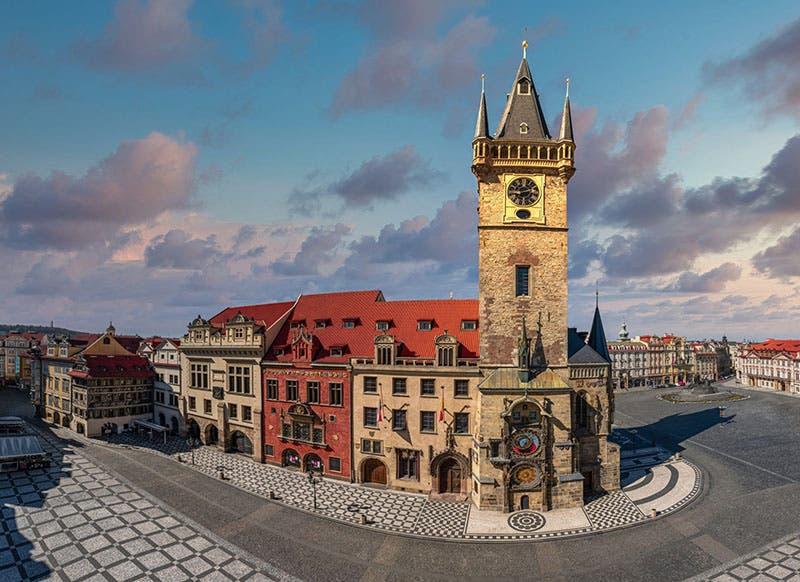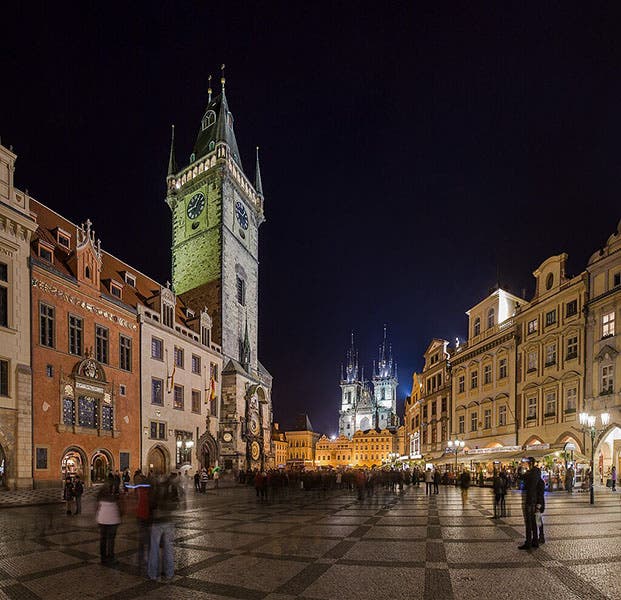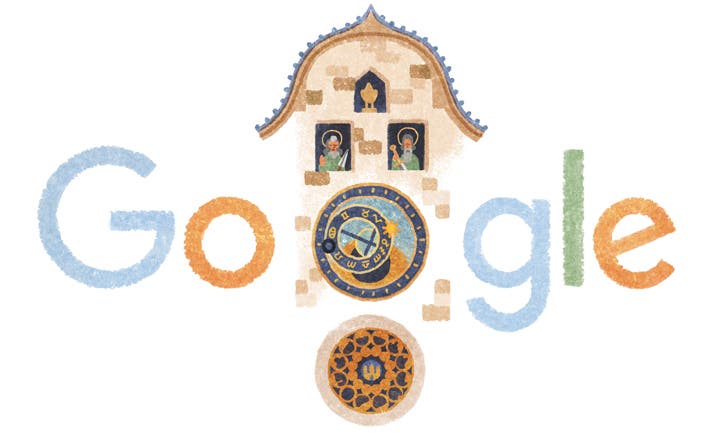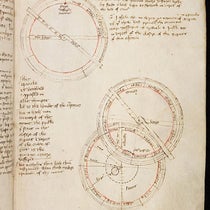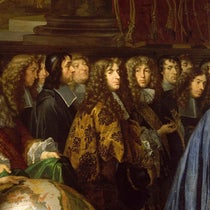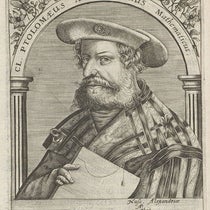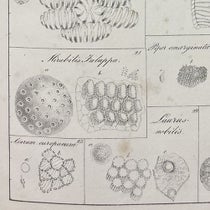Scientist of the Day - Prague Astronomical Clock
The Prague Astronomical Clock entered the historical record on Oct. 9, 1410, when it was first mentioned in the town records, and now that date is used as its birthday, the 600th one having been celebrated on Oct. 9, 2010. The clock is mounted on the lower south wall of the Clock Tower of the Old Town Hall in Prague, in Old Town Square. It was built by a clockmaker, Mikuláš of Kadaň, and a mathematical astronomer, Jan Šindel, but we know nothing about either, so it seems better to celebrate the clock itself rather than its makers. It is the oldest astronomical clock in the world that is still in operation, and is sometimes referred to as the Prague Orloj (from horologium).
A clock is said to be “astronomical” when it tracks the motion and position of at least one heavenly body (the Earth, in 1410, was not considered to be a heavenly body). Some astronomical clocks, like the small one of Giovanni Dondi, kept track of Sun, Moon, and all 5 known planets. The Prague clock tracked Sun and Moon and their movements through the Zodiac, as well as the phases of the Moon. This was done on the central dial, sometimes called the astrolabe dial (second image), which comprised the entire clock in 1410. The large dial below is a calendar dial and was added later, possibly before 1500.
Above the astrolabe dial are two small shuttered windows. At the stroke of each hour (sounded by a skeleton), the shutters open and an Apostle appears in each window; in rapid succession, they are rotated back and replaced by two more, until all 12 have made an appearance, in what is called the Precession of the Apostles. This is what the tourists come for, but the Apostles were a late addition to the Orloj, possibly not put in place until mid-19th-century.
The clock was nearly destroyed, along with the Town Hall, in a Nazi barrage in 1945; it was rebuilt and reopened in 1948. I have yet to be convinced that any of the original mechanism survives. I looked for photos of the clock's innards on the clock's official website, which is wonderful and an encyclopedia of information, and the only ones I found show brand new cogs and gears. I hope that some of the original mechanism is buried in there somewhere.
In the lovely nighttime panorama of Old Town Square that I found on Wikimedia commons (seventh image), the Gothic-looking church with its towers uplit at the back of the Square is the Church of Our Lady before Týn. This church, which Johannes Kepler attended while he was in Prague, contains the remains of and a monument to Tycho Brahe, the great Danish astronomer who ended his career in Bohemia. I hope the local tour guides, after explaining the clock, send the tourists in the direction of the church.
Google provided a Google Doodle on the Clock’s 605th birthday (eighth image). It was not one of their better efforts, in that nothing is animated (at least in the version I found). Still, it is nice to be remembered.
Prague city officials celebrated the Clock's 600th birthday on this date in 2010, and again in 2015 (when Google joined the party). The 610th birthday was spoiled by COVID. The celebration for the 615th birthday should be going on right now. However, I can find no internet indication that this is happening. I hope the Clock is feeling OK.
William B. Ashworth, Jr., Consultant for the History of Science, Linda Hall Library and Associate Professor emeritus, Department of History, University of Missouri-Kansas City. Comments or corrections are welcome; please direct to ashworthw@umkc.edu.

